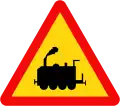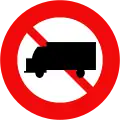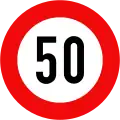Driving is a preferred way to explore Vietnam, as public transport services outside of large cities are usually overcrowded or non-existent.
Understand
Despite the government's hostility to private transport (due to being a communist country), Vietnam is a car-dependent country (or in some cities, a motorcycle-dependent country). While rail services exist, unlike in Japan, Vietnamese rail services are usually late, thus a car is preferred to get around outside of Hanoi, Ho Chi Minh City or other large cities. Generally, English proficiency tends to be poor among the emergency services including the police, thus knowing a bit of Vietnamese may be useful.
Road network
The total length of the Vietnamese road system is about 222,179 kilometres (138,056 miles) with 19.0% paved, mainly national roads and provincial roads (source: Vietnam Road Administration, 2004). The national road system length is 17,295 kilometres (10,747 miles) with 27.6% of its length paved. The provincial road system is 27,762 kilometres (17,251 miles) of length with 23.6% paved. The road network is relatively well developed, but is usually in poor condition.
Vietnam's road system is classified according to the administrative hierarchy:
- National roads (quốc lộ, abbreviated QL) are administered by the central government. They are marked by white milestones with red tops. On direction signs, they were historically denoted by white on blue markers, but since 2015 are denoted by black on white markers.
- Expressways or freeways (đường cao tốc, CT) are denoted by black on yellow markers on direction signs. Guide signs along expressways are green, in contrast to the blue guide signs along surface roads.
- Provincial roads (tỉnh lộ or đường tỉnh, TL or ĐT) are managed by provinces. They are marked by white milestones with blue or green tops. On direction signs, they are denoted by black on white markers.
- District roads (hương lộ or đường huyện, HL or ĐH) are managed by rural districts. They are marked by white milestones with brown tops.
- Commune roads (đường xã, ĐX) are managed by communes.
- Urban roads (đường đô thị, ĐĐT) are managed by cities and towns.
- Certain service roads (đường chuyên dùng, ĐCD) may be marked by white milestones with yellow tops.
Road rules

- In Vietnam, you need to keep right to the side of the road. If you come from a country that you are used to driving on the left, please concentrate at all times so that you do not accidentally veer into the wrong side.
- The national road speed limit is 50 kilometres per hour (31 miles per hour) due to the poor condition of the roads.
- Do not use your honk in your car from 10PM until 5AM. This rule is in place to prevent nuisance.
Road signs
Vietnamese road signage follows international conventions and are a mix of road signs used in Europe and Greece.
 Like Greece and Poland, warning signs are yellow triangles with a black symbol.
Like Greece and Poland, warning signs are yellow triangles with a black symbol. Regulatory signs are a red circle with a slash for prohibitions...
Regulatory signs are a red circle with a slash for prohibitions... ...and a blue circle for mandatated actions.
...and a blue circle for mandatated actions. Speed limits are posted in km/h.
Speed limits are posted in km/h.